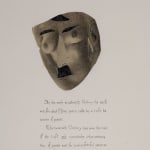Arnold Daghani 1909-1985
framed: 68 x 51.5 x cm
Further images
Provenance
presented by Carola Grindea 1986Exhibitions
2015 Out of Chaos – Ben Uri: 100 Years in London, Somerset House
2016 Art and the Holocaust, Ben Uri Gallery
2016 Out of Chaos: Touring exhibition, Laing Art Gallery
2019 Art-exit: 1939 - A Very Different Europe, 12 Star Gallery
Literature
Rachel Dickson and Sarah MacDougall, eds., Out of Chaos: Ben Uri; 100 Years in London (London: Ben Uri Gallery, 2015) pp. 122-123.;Walter Schwabe and Julia Weiner, eds., Jewish Artists: the Ben Uri Collection - Paintings, Drawings, Prints and Sculpture (London: Ben Uri Art Society in association with Lund Humphries Publishers Ltd, 1994), p. 119.



